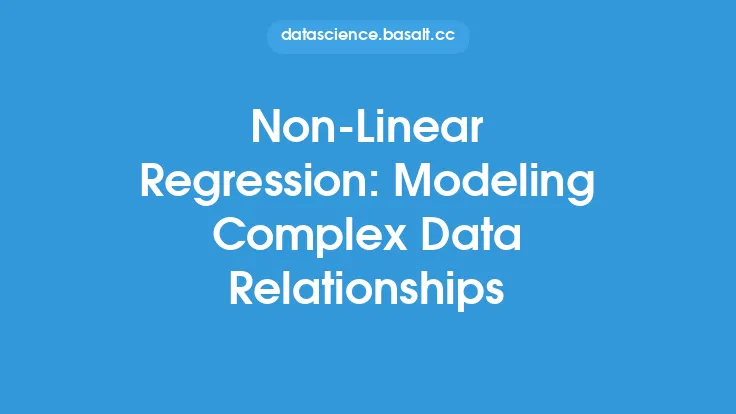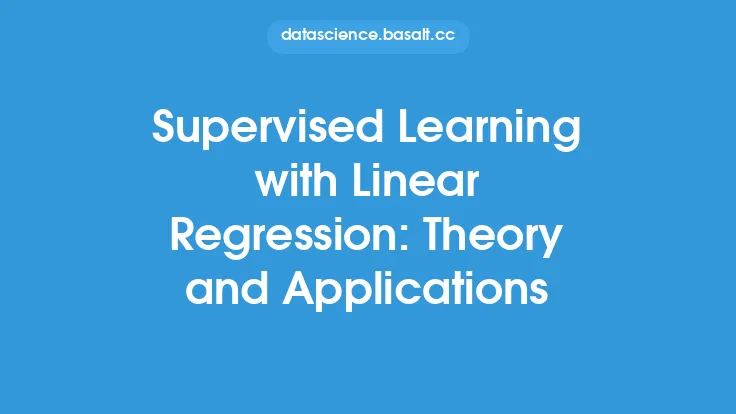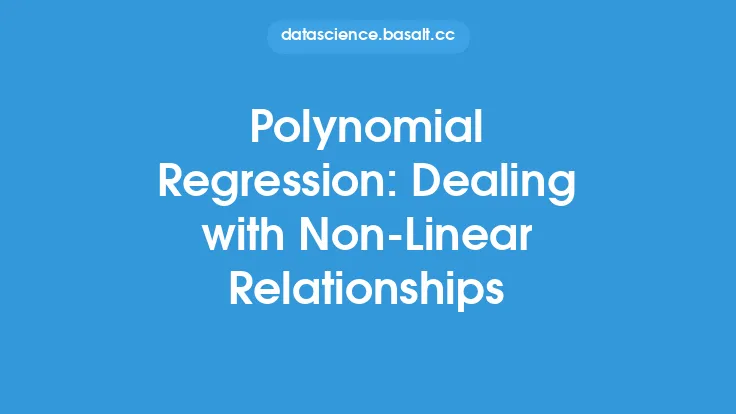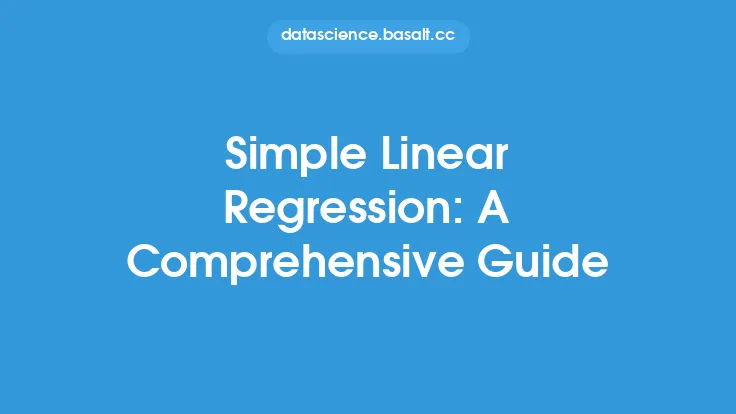In the realm of statistical analysis, regression models are a cornerstone for understanding the relationships between variables. While simple linear regression provides a foundational understanding of how two variables relate, many real-world phenomena involve more complex interactions between multiple variables. This is where multiple linear regression comes into play, offering a powerful tool for modeling these intricate relationships. At its core, multiple linear regression is an extension of simple linear regression, where more than one independent variable is used to predict the value of a dependent variable. This approach allows for a more nuanced understanding of how different factors contribute to the outcome variable, enabling more accurate predictions and deeper insights into the underlying dynamics of the data.
Introduction to Multiple Linear Regression
Multiple linear regression is a statistical technique that uses several independent variables to predict the outcome of a dependent variable. The model assumes a linear relationship between the independent variables and the dependent variable, which means that the change in the dependent variable is directly proportional to the changes in the independent variables. This linearity is a fundamental assumption of multiple linear regression, and it is crucial for the model's validity and interpretability. The general equation for multiple linear regression can be represented as Y = β0 + β1X1 + β2X2 + … + βnXn + ε, where Y is the dependent variable, X1, X2, …, Xn are the independent variables, β0 is the intercept or constant term, β1, β2, …, βn are the coefficients of the independent variables, and ε is the error term that represents the variability in Y that is not explained by the independent variables.
Assumptions of Multiple Linear Regression
For multiple linear regression to provide reliable and meaningful results, certain assumptions must be met. These assumptions include linearity, independence, homoscedasticity, normality, and no multicollinearity. Linearity assumes that the relationship between each independent variable and the dependent variable is linear. Independence requires that each observation is independent of the others, meaning that the observations are not paired or matched in any way. Homoscedasticity assumes that the variance of the error term is constant across all levels of the independent variables. Normality assumes that the error term is normally distributed, which is crucial for making inferences about the model parameters. Lastly, no multicollinearity means that the independent variables should not be highly correlated with each other, as this can lead to unstable estimates of the regression coefficients.
Estimation and Interpretation of Model Parameters
The parameters of a multiple linear regression model, including the intercept and the coefficients of the independent variables, are typically estimated using the method of ordinary least squares (OLS). OLS minimizes the sum of the squared errors between the observed values of the dependent variable and the predicted values based on the model. Once the model parameters are estimated, they can be interpreted to understand the relationship between the independent variables and the dependent variable. The coefficient of an independent variable represents the change in the dependent variable for a one-unit change in the independent variable, while holding all other independent variables constant. This allows for the analysis of the marginal effect of each independent variable on the dependent variable, providing valuable insights into the complex relationships within the data.
Model Evaluation and Selection
Evaluating the performance of a multiple linear regression model and selecting the most appropriate model from a set of candidate models are critical steps in the analysis. Common metrics for evaluating model performance include the coefficient of determination (R-squared), which measures the proportion of the variance in the dependent variable that is explained by the model, and the mean squared error (MSE), which measures the average squared difference between the observed and predicted values. Model selection can be based on these metrics, as well as on the principle of parsimony, which favors simpler models over more complex ones when both explain the data equally well. Techniques such as forward selection, backward elimination, and stepwise regression can be used to select the most relevant independent variables for the model, helping to avoid overfitting and improve the model's generalizability.
Applications and Limitations
Multiple linear regression has a wide range of applications across various fields, including economics, finance, marketing, and social sciences. It can be used for forecasting, where the goal is to predict future values of a time series based on past patterns and relationships. It is also useful in causal analysis, where the objective is to understand the effect of one or more independent variables on a dependent variable. However, multiple linear regression also has its limitations. It assumes linearity and additivity of the relationships between the independent variables and the dependent variable, which might not always hold in real-world scenarios. Additionally, the presence of multicollinearity among the independent variables can lead to unstable estimates of the model parameters, and the model can be sensitive to outliers and non-normality of the error term. Therefore, careful consideration of the model's assumptions and limitations is necessary to ensure that the results are reliable and applicable.
Advanced Topics and Extensions
Multiple linear regression can be extended and modified in various ways to address more complex data analysis challenges. One such extension is generalized linear models (GLMs), which allow for the dependent variable to have an error distribution other than the normal distribution, making it possible to model binary, count, and other types of data. Another extension is generalized additive models (GAMs), which relax the linearity assumption by allowing the relationships between the independent variables and the dependent variable to be non-linear. Furthermore, techniques such as regularization (e.g., Lasso and Ridge regression) can be applied to multiple linear regression to handle high-dimensional data and prevent overfitting. These advanced topics and extensions enhance the flexibility and applicability of multiple linear regression, making it a versatile tool for data analysis and modeling in a wide range of contexts.
Conclusion
Multiple linear regression is a powerful statistical technique for modeling complex relationships between multiple independent variables and a dependent variable. By understanding the assumptions, estimation, interpretation, evaluation, and limitations of multiple linear regression, analysts can harness its potential to uncover valuable insights from data. Whether in academic research, business decision-making, or policy analysis, multiple linear regression provides a robust framework for predicting outcomes, understanding causal relationships, and informing strategic decisions. As data continues to play an increasingly important role in guiding actions and decisions across various sectors, the importance of multiple linear regression as a fundamental tool in the statistician's and data analyst's toolkit will only continue to grow.





